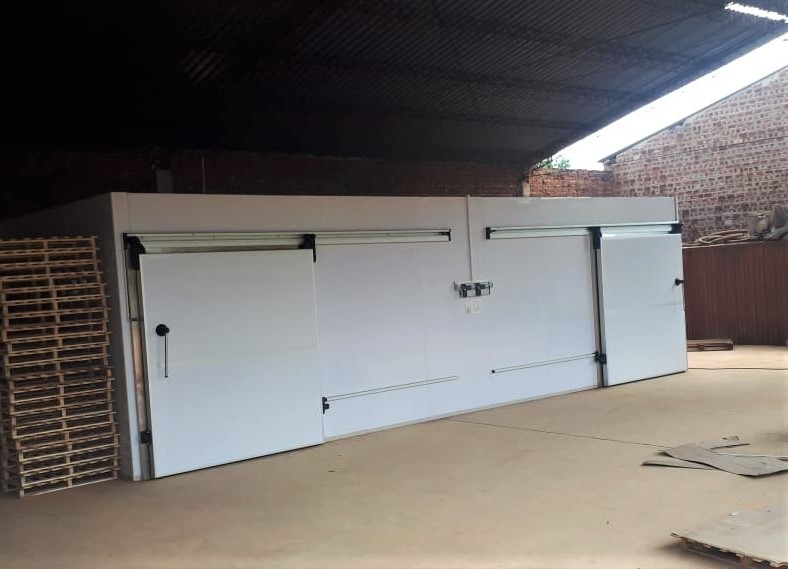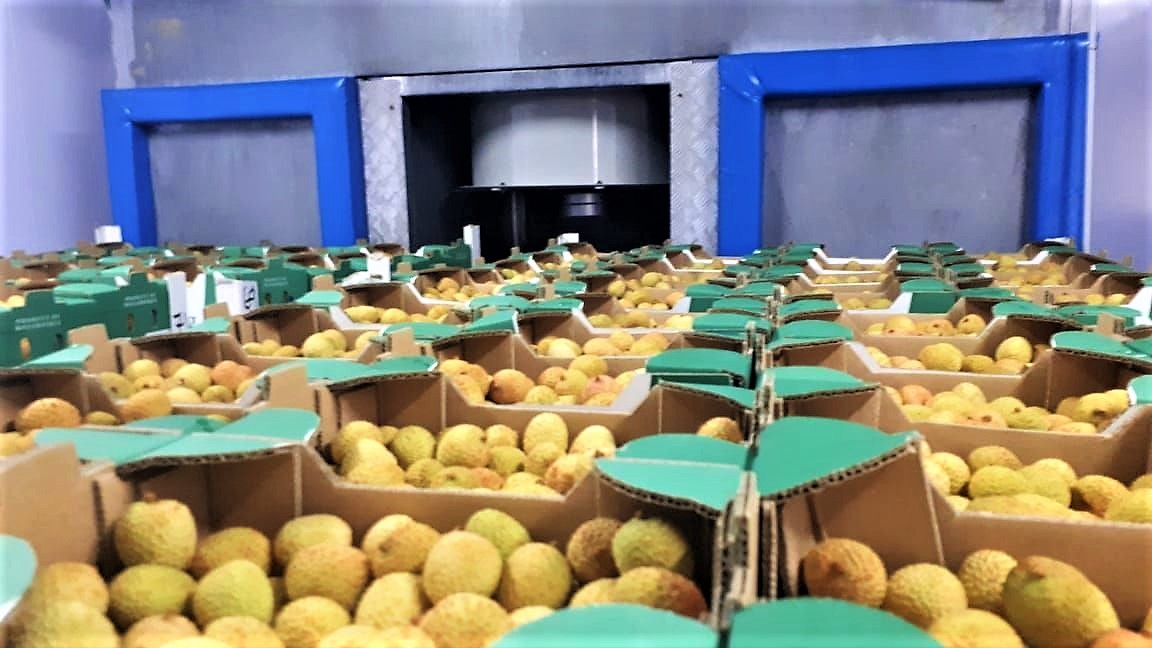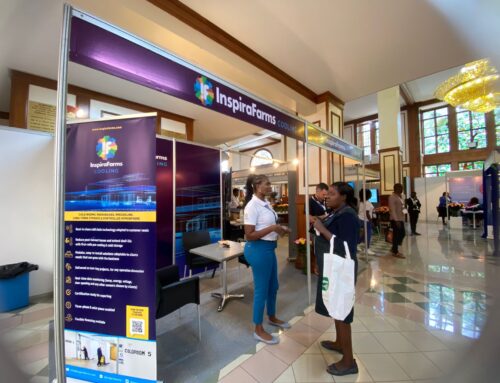On farm pre-cooling as a game changer for Claremont farms
European imports of African fruits & vegetables have grown 43% since 2010 (from $8.6 US Billion in 2010 to $12.2Billion in 2018), as Europe represents the highest share of African fruit and vegetables exports: 62% in terms of volume, and 66% in terms of value.
However, only a small fraction of African farmers are able to access export markets as they are unable to meet the quality and shelf life standards. One of the main constraints in meeting these standards is adequate cold chain infrastructure. The longer fresh produce remains at ambient temperatures with high respiration rates, the shorter the shelf life of the product. Fresh produce needs to arrive at the final market with enough shelf life days to make the trade sustainable and viable.
The key to this success is investment in cold chain infrastructure with efficient cooling technology as well as a full understanding of temperature protocols specific to your produce. In many cases, farmers are only able to invest in basic entry level infrastructure which may allow access to export markets via airfreight. However, this creates a more expensive supply chain with a higher carbon footprint and reduced profitability for the farmer. Investing in improved technology such as energy efficient pre-coolers, temperature-controlled packing rooms and finished goods rooms will give produce extended shelf life and allow access to markets via ocean freight.
Farmers spend a large amount of time, money and energy in producing a premium crop which is often lost during poor post–harvest practices. Understanding the different stages of the cold chain during, can maintain the premium quality of produce while utilizing an ocean freight programme with extended transit times. As an example, the transit time from Southern Africa to Europe is on average 21-35 days depending on the farm location. This means that quality must be maintained for the entire transit time as well as arriving with enough shelf-life days for the produce to be sold in the market.
Claremont is one of the farms with cold rooms
Claremont Farm in Juliasdale, Zimbabwe, was facing this exact challenge where premium quality was being lost due to the lack of the right cold chain infrastructure. Claremont Farm forms part of the Ariston Holdings Group. Ariston Holdings through its various investments produces apples, stone fruit, flowers, tea, coffee and macadamia nuts. Claremont specifically produces pome and stone fruits.
Claremont was able to access export markets via airfreight with marginal success using existing cold rooms. However, it was clear that these rooms with inefficient and the outdated technology could not keep up with international market demands for improved quality and reduced market prices. The rooms allowed for fruit to be stored after grading and packing. However, they were not able to offer the critical first stage in post-harvest cold chain which is removing field heat from the fruit as close to the time of picking as possible. Secondly, the rooms were not able to efficiently and effectively reduce fruit to 0-2 degrees which is the optimal shipping and storage temperature.
Claremont takes up on farm pre-cooling technologies
In 2019, Claremont acquired InspiraFarms technology for in-door cold storage, with double (partitioned) pre-cooling rooms and with forced air cooler (grid connected), expected to store 1,200 MT of stone fruit vegetables, with a target for 2019 of 12 MT per day to be cooled, graded, and held at temperature.
According to Glen Roelofsz, from Claremont,“keepingfruit quality in the post-harvest requires a lot effort to manage, control and influence. We had cold rooms, but we did not have active cooling so we couldn’t have full control over the quality of the product. The InspiraFarmspre-cooler has been a game-changer and has made a huge difference to us,particularly, by allowing us to cool the product for sea fright”.

InspiraFarm in-door cold storage with double (partitioned) pre-cooling rooms.
Once the on-farm pre-cooling was implemented by the 2019 season, Claremont found that the firmness of their fruit was being maintained with significant reduction of losses, by properly controlling rotting and moulding. The key to this success was the introduction of the pre-cooling technology and the training around proper use of the technology. Fruits started being cooled straight after picking with a faster cooling cycle due to the forced air coolers. After grading and packing, the fruits were then cooled to the correct temperature for shipping and storage again with reduced cooling cycles. This maintained the premium quality of the fruits from the orchards.
Claremont is prioritizing the extension of the shelf life of its vegetables.
Claremont has invested many years in getting it right at the production level, but with the introduction of new cold chain technology they are also prioritizing the extension of shelf life. The success of 2019 export season allowed Claremont Farm management to confidently offer their fruits to export markets via ocean freight as well as accessing markets with longer supply chains.
“With air freight, you’ve got maybe a week window from departure to arrival and perhaps consumption, but when you’ve got sea freight containers and the product is 3 to 4 weeks door to door, you need to be very sure of your cold chain and quality. This season has proven the efficacy of the systems and has allowed us to break boundaries. Our first sea freight containers arrived in great shape. It was certainly successful, and we were able to manage and monitor the quality a lot better than the prior cold chain regimes,” says Roelofsz.
Besides looking to switch their actual routes from air to sea, Claremont is also looking into new markets in the Middle East, where Saudi Arabia and United Arab Emirates are also growing markets for fruit imports (with a compound value of $2.8 US billion in 2018, and a 55% growth since 2010).
Roelofsz continues to say that, “I´m also trying to open the middle eastern markets, particularly Emirates. Now with the pre-cooler, I have more confidence in our product, and I feel more markets are open to us. Knowing that the product still has 4-5 weeks of life, I am a lot more confident in offering it to let´s say for example Saudi Arabia where it takes 3 to 8 days to get there. So yes, the pre-cooler adds another level of opportunities to access markets”.
Claremont reported an increased revenue with lower logistics costs as they are no longer relying on a third-party service provider for their cooling requirements. The ability to reduce post-harvest losses and maintaining the quality of class 2 fruits with extended shelf-life is giving the ability to store and market the fruit locally. Now the farm is increasing the overall sale in kilograms, with increased cash flow that is allowing them to expand the number of hectares of production and invest in new varieties.
While they are still exploring new markets and different freight options looking into the future, Claremont aims to increase their cooling and storage capacity.
“The main lesson out of Covid-19, is having little room for mistakes: if you don´t have your cold chain right in the fresh produce industry, you´re going to make mistakes and that´s going to take businesses to the wall. So, I think that the requirement for efficiencies and product cooling is going to become more imperative and more important to staying viable,” he concluded.
While Claremont aims to come out stronger after the Covid–19 experience, InspiraFarms will provide cooling solutions to help growers like them overcome adversity while creating new and better opportunities for their fresh produce.



